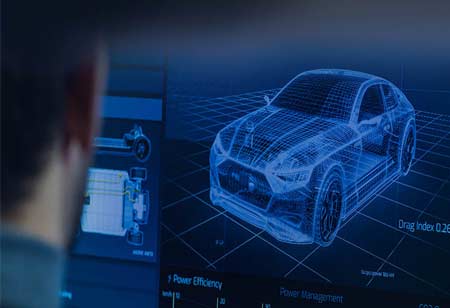THANK YOU FOR SUBSCRIBING
THANK YOU FOR SUBSCRIBING
Be first to read the latest tech news, Industry Leader's Insights, and CIO interviews of medium and large enterprises exclusively from Auto Tech Outlook

By
Auto Tech Outlook | Tuesday, February 21, 2023
Stay ahead of the industry with exclusive feature stories on the top companies, expert insights and the latest news delivered straight to your inbox. Subscribe today.
Connectivity opens the gate to cybercrime, so extra protection mechanisms are required to ensure system security.
Fremont, CA: Today, carmakers are differentiating their brands by vehicle and connectivity features. Car connectivity also offers carmakers opportunities to enhance reliability, onboard diagnostics, telematics, and infotainment systems. Also, connectivity supports predictive maintenance and repair, on-demand insights, usage-based insurance, and real-time navigation guidance.
Real-time connectivity is also the main enabler of automated driving (AD), as it allows the vehicle to interact with the surrounding infrastructure, attach to other road users, and enhance the environmental data with real-time updates.
The line smear between individual cars and the cloud with the introduction of service-oriented communication within the vehicle. This creates the capacity for car manufacturers to implement vehicle-related services onboard and in the cloud transparently. Hence connectivity becomes a broader issue, less centered on vehicle-specific communication protocols.
These and other connectivity trends are developing new business models and partnership opportunities for carmakers, but also big challenges to guarantee safety and security.
To enable the system's safety, data for automated driving must be reliably available in real time. The software must be able to amalgamate the data, enabling more secure automated driving.
Connectivity opens the gate to cybercrime, so extra protection mechanisms are required to ensure system security. Suppose no standards have been introduced to ensure interoperability. In that case, there is also a risk for car manufacturers to initiate technologies that will later become obsolete due to standardization and incur extra effort to turn standard-compliant.
Check Out This : Environmental Business Review
Optimizing V2X connectivity
One of the most significant enablers for automated driving has been the emergence of V2X communications, in which cars are connected digitally to other vehicles, the surrounding infrastructure, and communication networks. Carmakers are investing greatly in this technology to make V2X innovations more robust and widely available to consumers (traffic light recognition, real-time traffic information, hazard warnings).
Onboard sensors like radar, infrared night vision, lidar, and ultrasonic cameras are limited in their real-time ability to perceive the environment around them. For instance, fog or snow can dim the "vision" of these perception systems and lead to sensor errors. In comparison, 5G-based V2X communication systems are almost unlimited in their real-time ability to exchange accurate data. Offboard data provides information from onboard sensors independently of weather conditions, allowing drivers to provide information that sensors cannot provide.
To allow this, the vehicle itself must also serve as a sensor. All V2X-enabled vehicles broadcast their data omnidirectionally and simultaneously receive data from nearby nodes.
By sharing data, like their position and speed, with surrounding vehicles and infrastructure, V2X systems improve driver awareness of potential dangers and dramatically improve collision avoidance, reducing fatalities and injury severity. V2X technology can also enhance everyday driving efficiency by notifying drivers of upcoming traffic congestion, proposing alternative routes, and supporting eco-friendly driving practices that reduce emissions.
Benefitting from over-the-air updates
Just securing connectivity is insufficient to ensure that vehicles are safe and secure in the long term. The increasing amount of software (comprising open source) also increases the need to continuously keep all the software up to date. Vehicles cannot be asked for the workshop for every software update, so OTA updates are the first choice.
While this technology already occurs, today's focus of OTA updates is on user experience. This will shift safety and security updates in the future because of regulatory standards (UN R156) and a new ISO standard (ISO 24089). Carmakers must guarantee that their OTA practices follow with them at the latest when the rules come into force.
The OEM advantage from reduced costs for continuous updates and the avoidance of software-related recalls. Plus, they reinforce their reputation as a supplier of always secure, often up-to-date cars.
By securely upgrading a car's digital features and functionality through the cloud, carmakers give drivers automatic access to the most advanced technology. They can also diagnose and repair any software-related issues. OTA software updates also produce profitable new opportunities and business models. For example, carmakers can develop innovative features, sell them, and distribute them seamlessly and instantly over the air.
Modifying important vehicle functions by OTA updates based on accurate, secure, and thoroughly-validated underlying processes and technologies. This system architecture needs extensive skills and know-how in vehicle diagnostics, signal-based, and service-oriented communication, safety, and security to enable vehicle-wide updates over the air. It also needs familiarity with all relevant protocols. For instance, signal-based communication in Classic AUTOSAR has been extended by service-oriented communication in Adaptive AUTOSAR.
 Copyright © 2025 AutoTech Outlook. All Rights Reserved | Privacy Policy | Subscribe | Sitemap | About us | Feedback Policy | Editorial Policy
Copyright © 2025 AutoTech Outlook. All Rights Reserved | Privacy Policy | Subscribe | Sitemap | About us | Feedback Policy | Editorial Policy 



